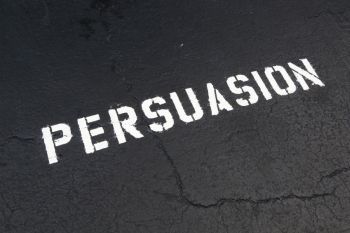Learn
Informative/Expository Writing
Informative/expository writing explains. Simple, huh? You will use this writing the most in life. The purpose of this kind of writing is to inform the audience, but it also can describe while defining. What informs you the most at school, besides your friend who can't keep a secret?

So now that you know informative/expository writing is to provide information or to explain, you have established a focused purpose. This purpose helps increase readers' knowledge of a subject. Think about all of your textbooks that increase your knowledge. How do they increase your knowledge?
Writers can increase knowledge by offering definitions and explanations to clarify concepts and ideas or by comparing and contrasting characters, events, and texts. Writers can also increase knowledge by predicting cause and effect or explaining the reasons for an event.
Good writers draw from background knowledge as well as from multiple print and non-print texts. They incorporate relevant background information from the reading passage if one is provided.
Writing Strategies
Use these three strategies to make connections and become a better reader and writer.
Text to Text - This makes a connection between a piece of reading that the person has read previously.
Text to Self - This makes a personal connection from the reader's own experiences.
Text to World - This makes a larger connection beyond personal experiences; it may be about an insightful memory from pop culture, the Bible, news, etc.
The writing prompt provides you with the information about the type of essay you are to write. You know that an informative/expository essay can explain, define, classify, analyze, or compare/contrast. Read Understanding Writing Assignments and Understanding Writing Assignments: Reading Practices.
Look at the prompt below. Locate key terms that will help you identify the type of writing and essay you are to complete. Hover over the underlined terms to view important instructions.
There are positive and negative this tells you that you will compare and contrast conditions for providing a person under sixteen with a cell phone. Write an essay the format for your paper for your teacher explaining both the positive and negative this tells you that you will compare and contrast conditions about teen cell phone use. Be sure to include details and examples that clearly explain keyword for your topic and purpose what you mean.
So, when you compose your informative/expository assignment, remember to do the following:
use precise language and specific vocabulary;
use transition words to help your reader to understand and follow what you are saying;
support the thesis with relevant, well-chosen facts, definitions, concrete details, quotations, and examples.
Read Transitional Words and Phrases.
Narrative Writing
Narrative writing is a type of writing that allows you to tell a story with characters and plot. That means it has a beginning, middle, and end. Both fictional and nonfictional works can be written in narrative mode because you can develop real or imagined experiences.

The purpose of narratives is to tell a story. Every student has a story to tell. Think about how you respond when your parents ask how your day was at school. These stories can be told through short stories, memoirs, novels, plays, poems, autobiographies, songs, visual art, etc.
Good writers incorporate different techniques when they write narratively. Creating dialogue, using imagery, and developing a point of view are all wonderful strategies to use in narrative writing.
Narrative relies on experience and creativity; however, the writing must have a point. If it doesn't, why tell it? Make sure you relate the events in some sort of sequence by setting it in a specific time and space. Include detailed observations of people, places, and/or events.
Writing Strategies
When you create your narrative assignment, remember to do the following:
establish a clear purpose;
use a variety of techniques (dialogue, imagery, plot, point of view) to engage readers;
convey a sense of significance of the experience;
use a sequence of events that would unfold naturally for the reader;
use concrete words and sensory details.
Argumentative Writing
Argumentative writing introduces a claim, a reasoned way of showing the writer's position, belief, or conclusion. You make claims all of the time. How many times a day do you try to provide a logical claim that you should be able to do something that you want to do?

Writers try to get the reader to accept their viewpoints by convincing the reader through facts and examples. Good writers provide relevant background information especially if a reading passage is provided.
Good writers support claims with facts, details, and examples. By doing this, good writers acknowledge and differentiate the claim from counter claims. They choose words and phrases carefully to clarify the relationship among claims, counterclaims, reasons, and evidence.
Writing Strategies
When crafting your argumentative assignment, remember to do the following:
consider other perspectives on the issue;
offer facts that support the reasons;
provide textual evidence;
anticipate the audience's knowledge and concerns;
maintain a clear focus.